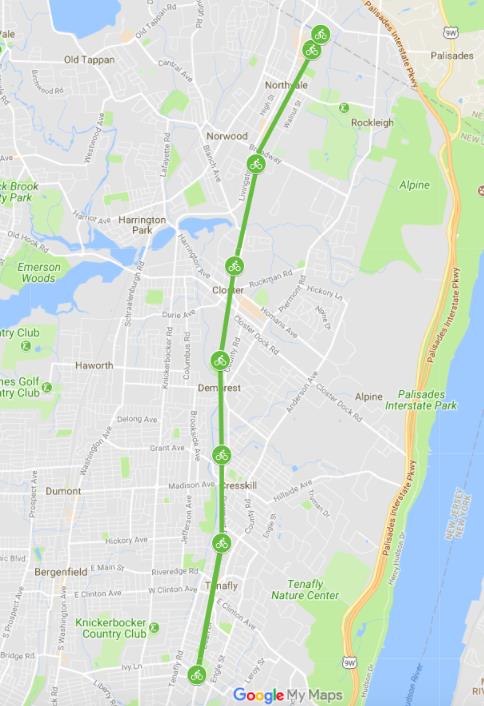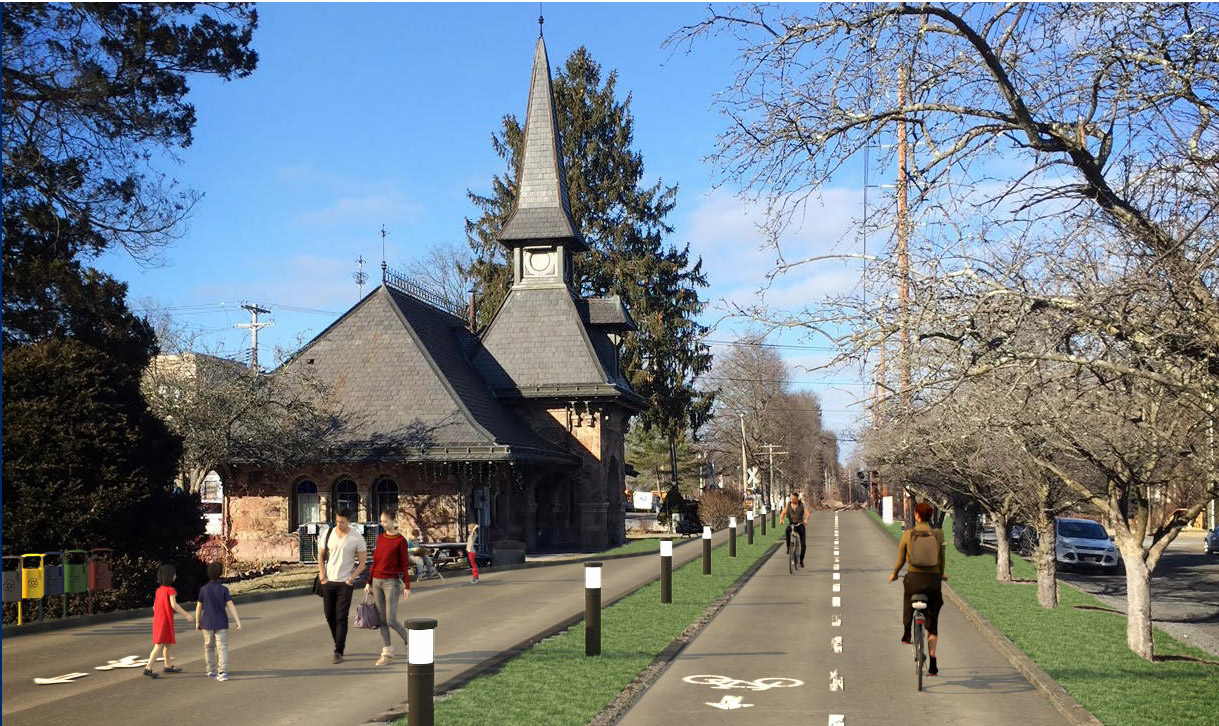
BY MICHAEL OLOHAN
OF NORTHERN VALLEY PRESS
DEMAREST, N.J.—Approximately 300 residents, public officials, and greenway advocates provided mostly positive opinions on three greenway concepts presented at a public input session March 5 at Northern Valley Regional High School at Demarest.
State Department of Transportation (DOT) officials, along with consultant NV5 of Parsippany, presented charts, maps, descriptive displays, and information tables.
In August 2018, the DOT undertook a study to determine whether a greenway—a linear park proposed for a 7.4-mile unused CSX rail line—was feasible, and hired a planning consultant to assist its efforts.
The proposed greenway would weave through Tenafly, Cresskill, Demarest, Closter, Norwood, and Northvale and offer biking, walking, and educational benefits.
Moreover, Alpine, Bergenfield, Harrington Park, Old Tappan and Rockleigh—along with area environmental groups and Rotary clubs—have passed resolutions of support. Englewood is among other towns reportedly very interested.
Attendees March 5 saw three versions of the project on paper: Concept A is for a greenway and linear park. Concept B is for a shared use path. Concept C is for rail with trail. All accommodate paths with scenic, recreational, and educational amenities and aim to deliver economic benefits.
Costs are pending as part of the final report, which will inform additional strategic work, including a funding plan.
First public input chance
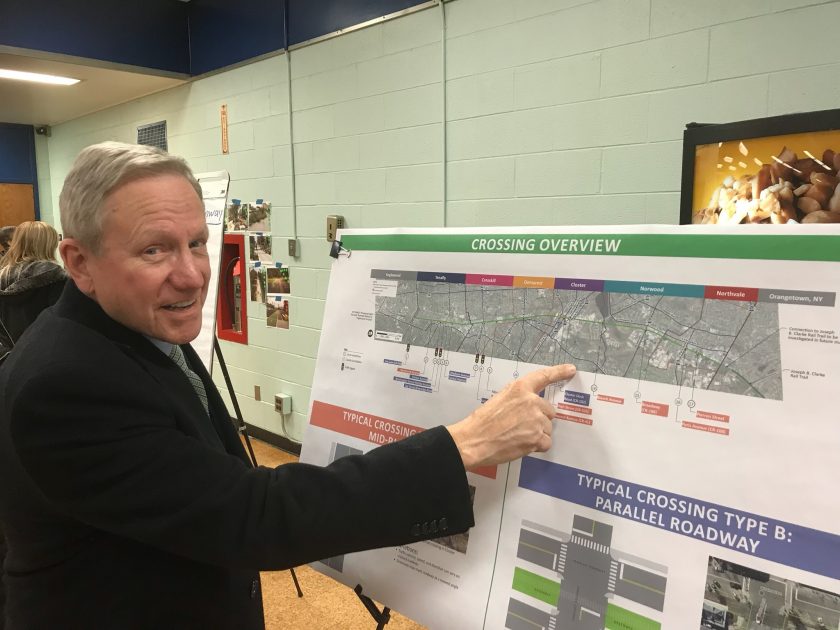
Local officials, including mayors, drifted in and out of the public information session over three hours. Closter Mayor John Glidden, Norwood Mayor James Barsa, Tenafly Mayor Peter Rustin, and Englewood Mayor Michael Wildes were among them, as were council members and school trustees.
Northern Valley Regional High School District Superintendent James Santana also attended the session.
Participants took in information on context and considerations for the project, with photos of downtowns, residential developments, bridges, utilities, commercial developments, roadway crossings, schools and municipal assets, historic assets, and charts on area demographics.
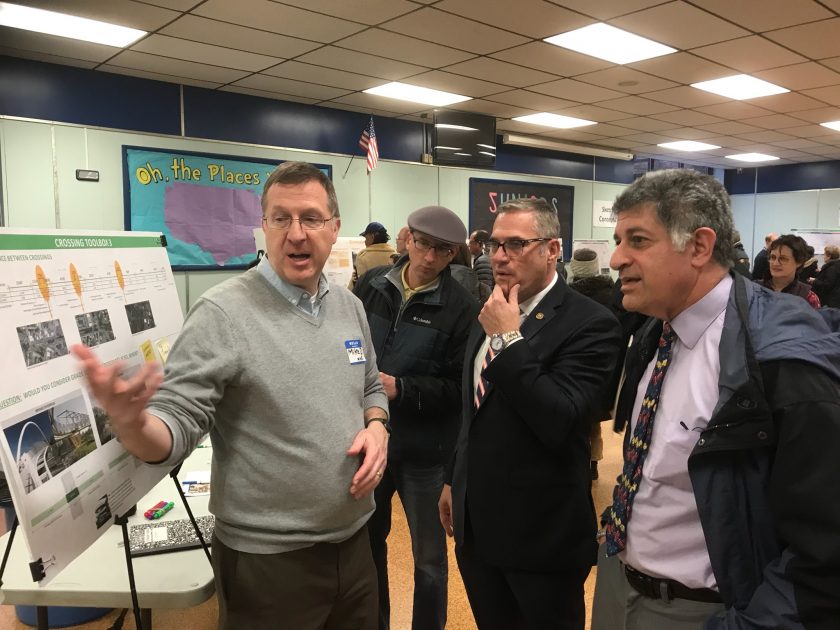
State DOT project manager Joseph B. Powell, a principal transportation planner, said a final report on the three concepts, with cost estimates, is due by April. The report will not recommend any of the specific concepts.
Public questions and input—general praise and probing questions alike—were captured via sticky notes attached to each of three concepts displayed. Powell said all comments would be included in the final report.
Powell also said the Northern Valley Greenway Interlocal Committee could come to the DOT and reapply for a follow-up to the study to further develop the concepts.
“There’s any number of ways you could go with this,” he added.
DOT Regional Manager Anthony Sytko said comments would be taken into consideration and factored into a final decision.
“If there is a very clear overwhelming support or opposition to a particular option, that will be noted. All of that is going to be included in a final report,” he said.
Glidden told Sytko that the project enjoys plenty of grassroots support in Closter and throughout the Northern Valley.
“The kids, their parents and the schools are all talking about this,” he said.
You are here…
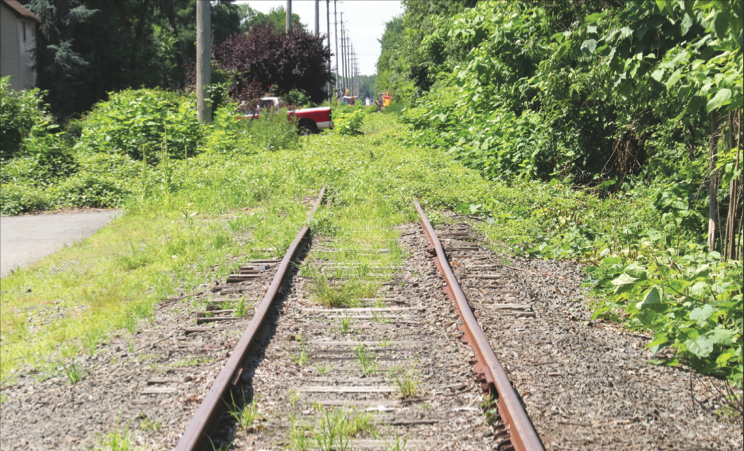
• Concept A, a “Greenway and Linear Park,” offers a greenway corridor 60 feet wide. It’s what some called a deluxe greenway design.
Highlights include a 16-foot-wide shared pathway for cyclists and joggers, a 4-foot gap, and an 8-foot dedicated walking path. On both sides of the dual pathways offered, 16-foot-wide buffers would protect environmentally sensitive or constrained areas.
This design offers the widest pathways as well as separate paths for walkers, versus runners and bicyclists.
• Concept B, a “Shared Use Path,” offers smaller buffers on both sides and a 16-foot-wide shared pathway for all users including bicyclists, joggers, and walkers.
The design cites a similar one, Middlesex Greenway in Middlesex County, which is popular.
• Concept C, “Rail With Trail,” proposes to preserve existing rail operations and construct a shared-use path within margins of the existing right-of-way, as available.
It proposes a 14-foot-wide shared-use path for all users, with a mix of travel speeds and modes among bicyclists, joggers and pedestrians.
At a glance, most sticky note comments appeared to favor Concept A, which showed “robustly proportioned bicycle and pedestrian facilities to handle the expected heavy user volume from the community and surrounding areas.”
This design featured space for activity zones, park features, and exercise stations, and emphasizes conservation, using “pollinator corridors” as one example.
The design incorporates joint strategies with local nature centers, school systems, and local health, wellness, educational and environmental organizations to maximize community engagement.
Organizations on board
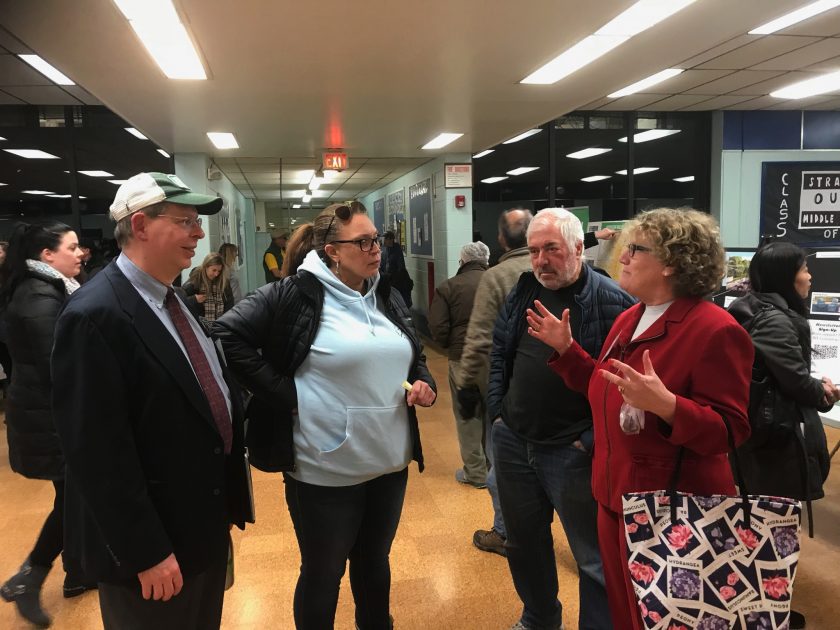
Northern Valley Greenway Interlocal Committee team leader Andrew Mikesh said that following the report’s release the committee will put together a strategy “at a more granular level and with better community involvement.”
He suggested there’s much more work ahead for teams to strategize horticulture and agriculture, educational opportunities with local schools and nature centers, and exercise and activities opportunities.
Mikesh also said community outreach is a priority, and that he’s glad more people in the public have had a chance to weigh in on the project and share the excitement.
He said the committee has been in touch with CSX on ways to cooperate on the greenway, including railbanking the unused rail line. Railbanking is a voluntary agreement between a railroad company and a trail agency to use an out-of-service rail corridor as a trail until a railroad might need the corridor again for rail service.
The group also plans a fundraising push as part of its outreach and public education work.
The effort to turn the unused rail line into a greenway began in 2016 when teenager Alexander Philliou started a change.org petition after hearing of a Haworth teen killed riding his bicycle to school.
Philliou saw the unused rail corridor as a potential safe pathway for bicyclists, hikers and walkers. Area Rotary clubs endorsed his effort and borough councils passed resolutions of support.
Within a year, an interlocal committee was formed to initiate efforts and build consensus for a greenway. The Northern Valley Greenway website notes its efforts are a project of the Rotary Clubs of Tenafly, Northern Valley, and Cresskill/Demarest.
The greenway’s six core towns are challenging each other’s residents to contribute to greenway planning efforts.
